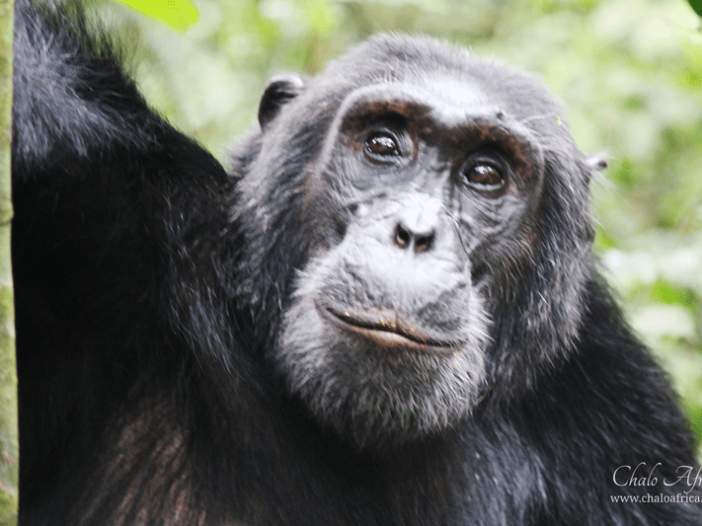
Day 1: Hello Entebbe!
The captain of the Kenya Airways flight announces that we will be shortly descending into Entebbe. I eagerly look out of the window and spot the shimmering blue waters of Lake Victoria. In the distance is the shoreline: rolling green hills speckled with the sloping red-tile roofs. We land on the very edge of the water, a beautiful entrance into a beautiful country.
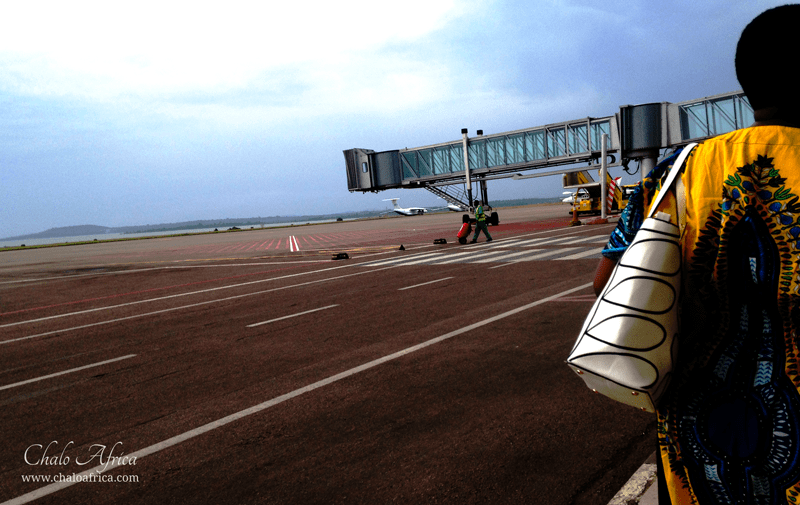
As we walk across the tarmac of Entebbe Airport to the arrivals area (the airport is undergoing renovations at the moment), we are immediately checked for our Yellow Fever Vaccination cards. I remember reading that there has been an outbreak of YF earlier this year, so I’m glad that precautions are being taken. The airport is relatively small and has the sepia tint of Soviet-era airports. After filling up an immigration form, I walk to the online visa counter, submit my application form, give my biometrics, and receive my visa (on payment of USD 50). Easy as that! I exchange some money at the forex counter immediately outside the customs area and am greeted by my guide, JP.
It’s evening in Entebbe and the roads are rather quiet. We make it to Karibu Guesthouse within 10 minutes, a beautiful sanctuary within a beautiful town.
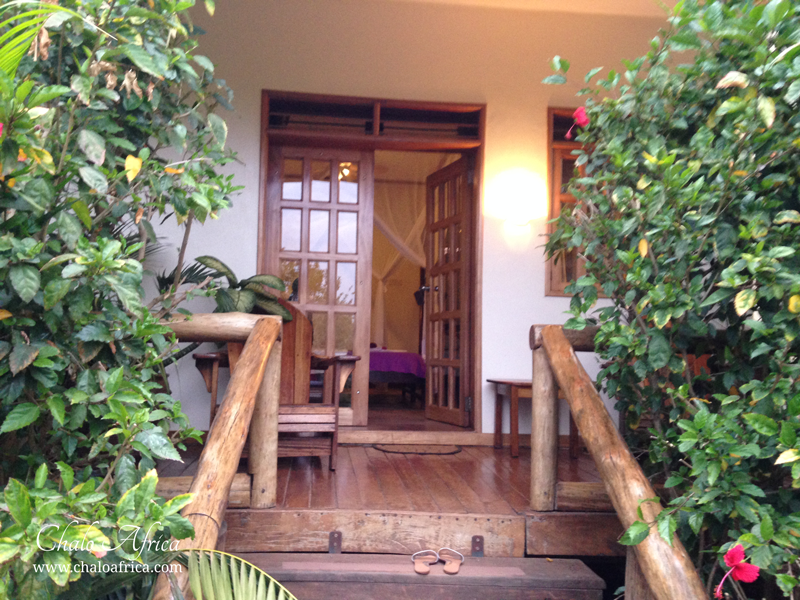
Kampala, I hear from JP, is 32 kilometers away and can take anywhere between 2 to 5 hours depending on traffic. It’s going to be a quiet evening before our safari begins at 6 am tomorrow.
Day 2: Chimp Tracking in Kibale Forest
We leave at dawn to beat the morning traffic. Even at this time, the roads are getting crowded: school children dressed perfectly in their uniforms, boda-boda bike taxis weaving their way in and out, cyclists ferrying bananas back and forth. JP takes a shortcut through mud roads to beat the highway traffic and soon we are on a relatively decent highway to Kibale National Park.
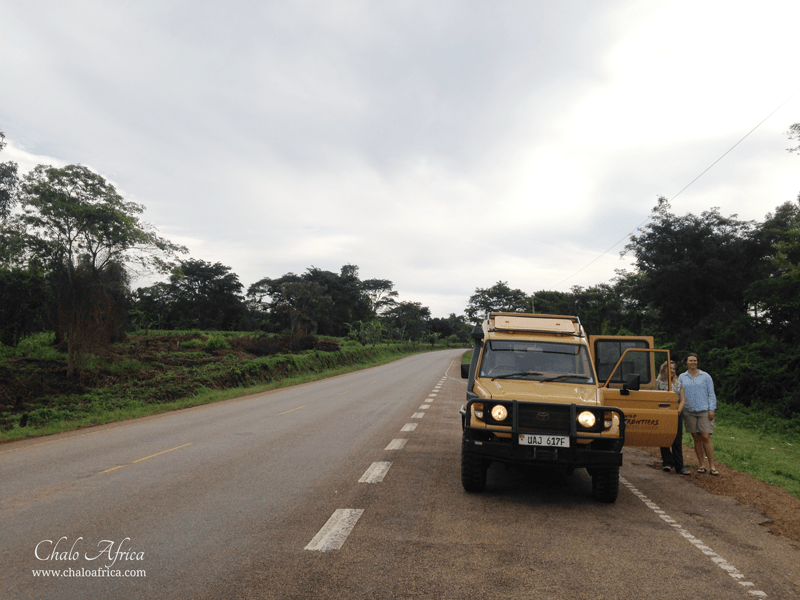
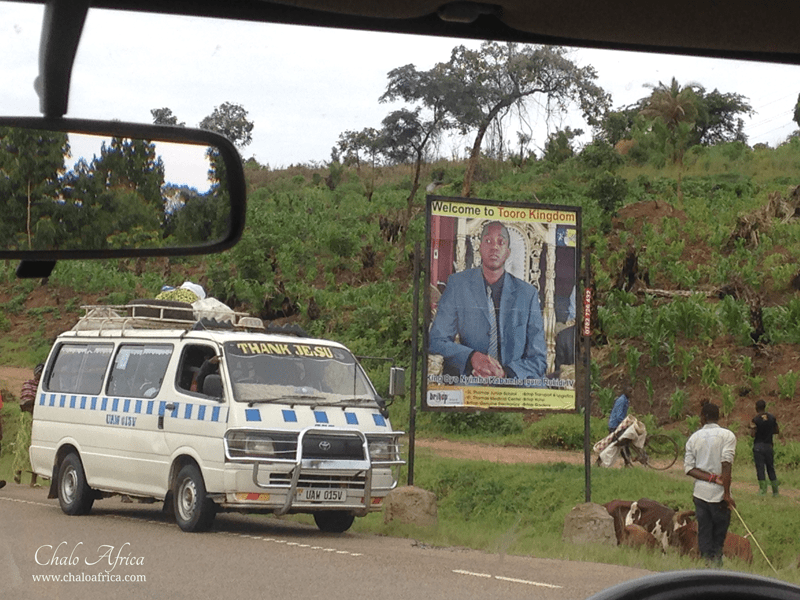
Because we aim to do chimp trekking this very afternoon, there is no time to stop anywhere (aside from bush toilet breaks). We reach Kibale by around 1 pm, and are very happy to gulp down our packed lunches: an excellent club sandwich, quiche, banana bread and a banana — all thanks to Karibu Guesthouse!

The entrance to Kibale forest is right next to Primate Lodge. We have to first register, and then we have a small briefing by our UWA guide, Jessica, a small lady with a big personality. Wielding a machete and a gun, we know not to mess with her. Jessica gives us a basic safety briefing and tells us that one group has just seen the chimps close by, so if we are lucky, we should be able to spot them quite easily.
And off we go. At first, we walk at a rapid pace through the trails in this beautiful rain forest, only pausing when Jessica tells us to watch out for the safari ants (also known as army ants, with jaws so powerful that they are used locally as sutures to stitch wounds). We tuck in our pants into our socks and carry on.
Kibale National Park is 766 square kilometers in size, with 13 different species of primates. It is home to Uganda’s largest population of the common chimpanzee (approximately 1300 – including habituated families), and so is one of the best places to see chimps in their natural habitat. There is a 90% chance to see them when you go tracking in Kibale, much better than the odds in Rwanda or other parks in Uganda. Aside from chimps, there is also the Uganda mangabey (Lophocebus ugandae) — we spotted a few tails, the Ugandan red colobus (Procolobus tephrosceles), the black-and-white colobus (Colobus guereza) — we saw both of these, the L’Hoest’s monkey, and the blue monkey (Cercopithecus mitis).
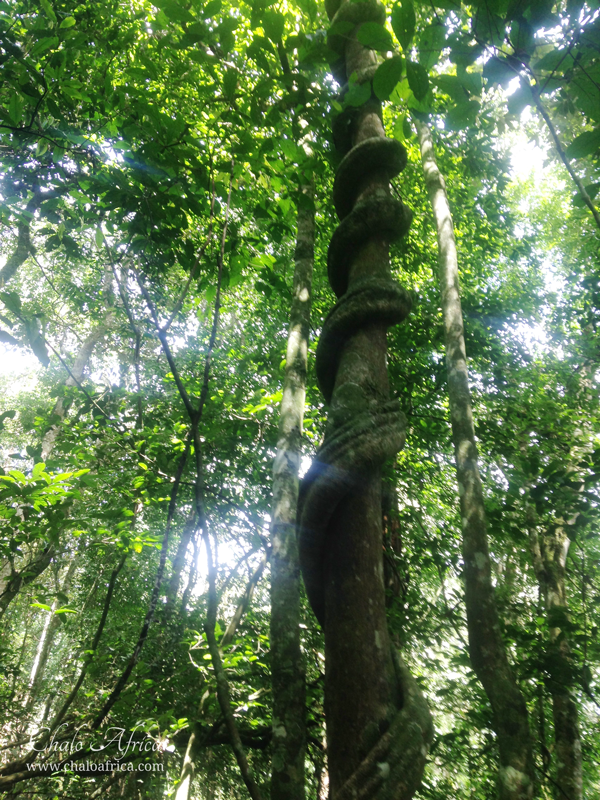
The forest is thick with tall trees, clinging vines, and webbed undergrowth. Luckily there is a trail that makes it quite easily for us to follow Jessica. In some parts, there a slippery boardwalk we have to walk on, crossing over streams and swamp land, curtained by large palm trees. ‘Poopoo’ says Jessica, pointing to the ground with an ecstatic smile on her face. Nothing like fresh chimpanzee faeces! We soon see other traces of the chimps: chewed off bits of jackfruit, and more interestingly, chimpanzee knuckle marks.
Jessica walks quickly from one path to another, tracking the chimps closely. She is on the radio with a colleague, trying to see whether they have spotted anything from another direction. Suddenly, she stops. ‘We’ve lost their tracks. We need to now stop and listen. The forest has its own voice. We must wait now.’ And so we wait, lowering our backpacks, relieved that we finally have a short break.
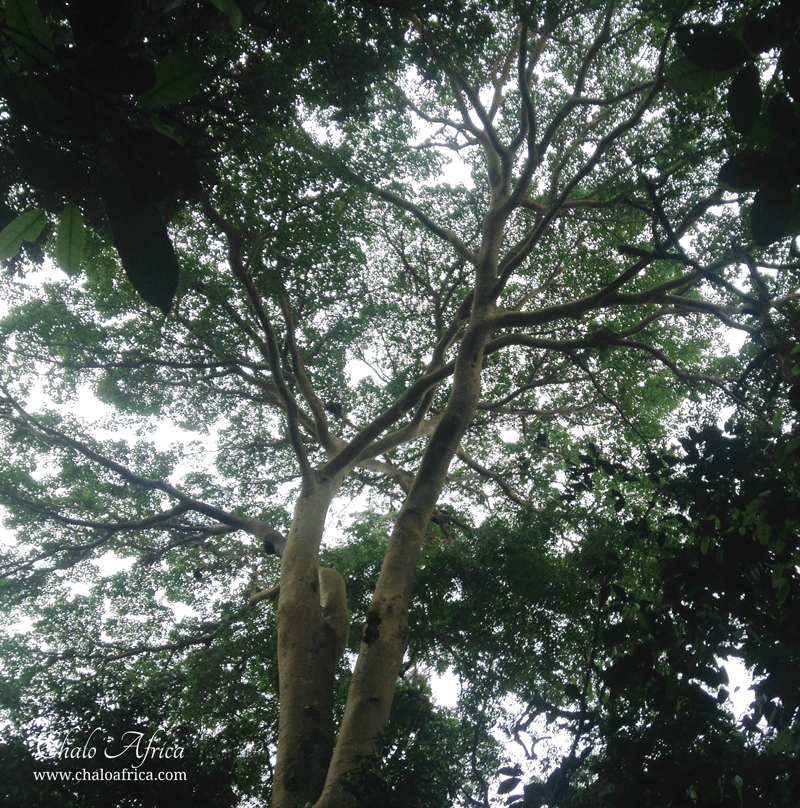
We stop below a fig tree that reaches up to the sky: the chimps are on it, busy gorging their faces with figs. A shower of figs falls from the sky. Apparently, the chimps love figs, sucking on their juice. ‘Look, look,’ Jessica points to the ground. There is a male chimp just a few feet away, making his way down to the log. We follow him, unable to come to terms that we are so close to him. He scampers off, but there is another chimp close by. ‘That’s Rukoro,’ Jessica says proudly. ‘He’s one of my favourites.’
We can tell why. Rukoro poses for the camera, his mouth full figs. He looks left and right, gives us curious looks and peacefully chews on his figs. After several minutes, he decides to leave us.
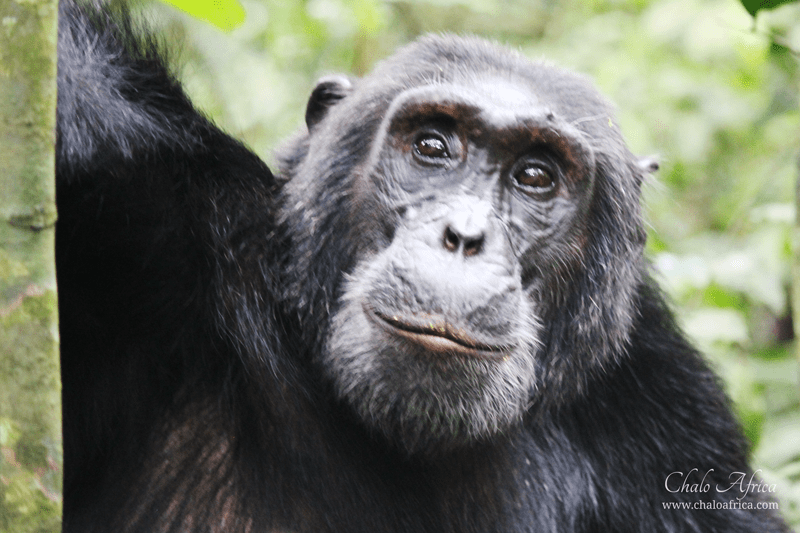
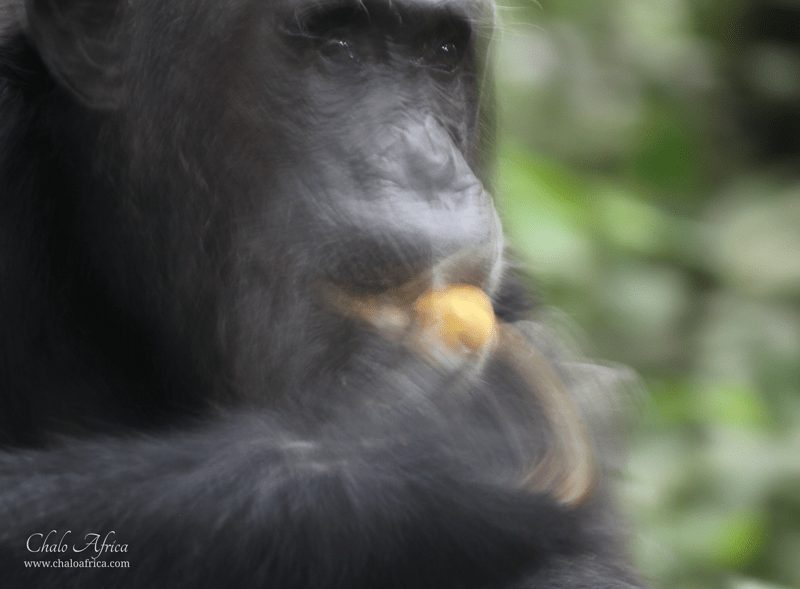
Soon we feel some (non-chimp) drops of rain — it is the wet season after all — and Jessica asks us whether we are okay to leave. We nod happily and walk to the highway, where JP will be meeting us in our vehicle. A few minutes later, the skies open above us and it rains heavily over Kibale Forest, home to some of the most beautiful creatures in the world.
Tips: Carry a small backpack when you go chimp tracking. You need to carry some water, a raincoat, binoculars and a camera with you. It is good to carry both a telephoto lens (if the chimps are up on the trees) and a 18-55mm / 50mm lens (if the chimps are closer). Remember there is very low light in the forest, so you will probably use your 50mm lens more. Good shoes and long socks are also recommended.
If you are interested in chimp tracking in Uganda, Rwanda or Tanzania, contact our Private Travels team. We can help you plan the perfect trip — either part of a small group scheduled tour, or your own private, tailor-made trip.

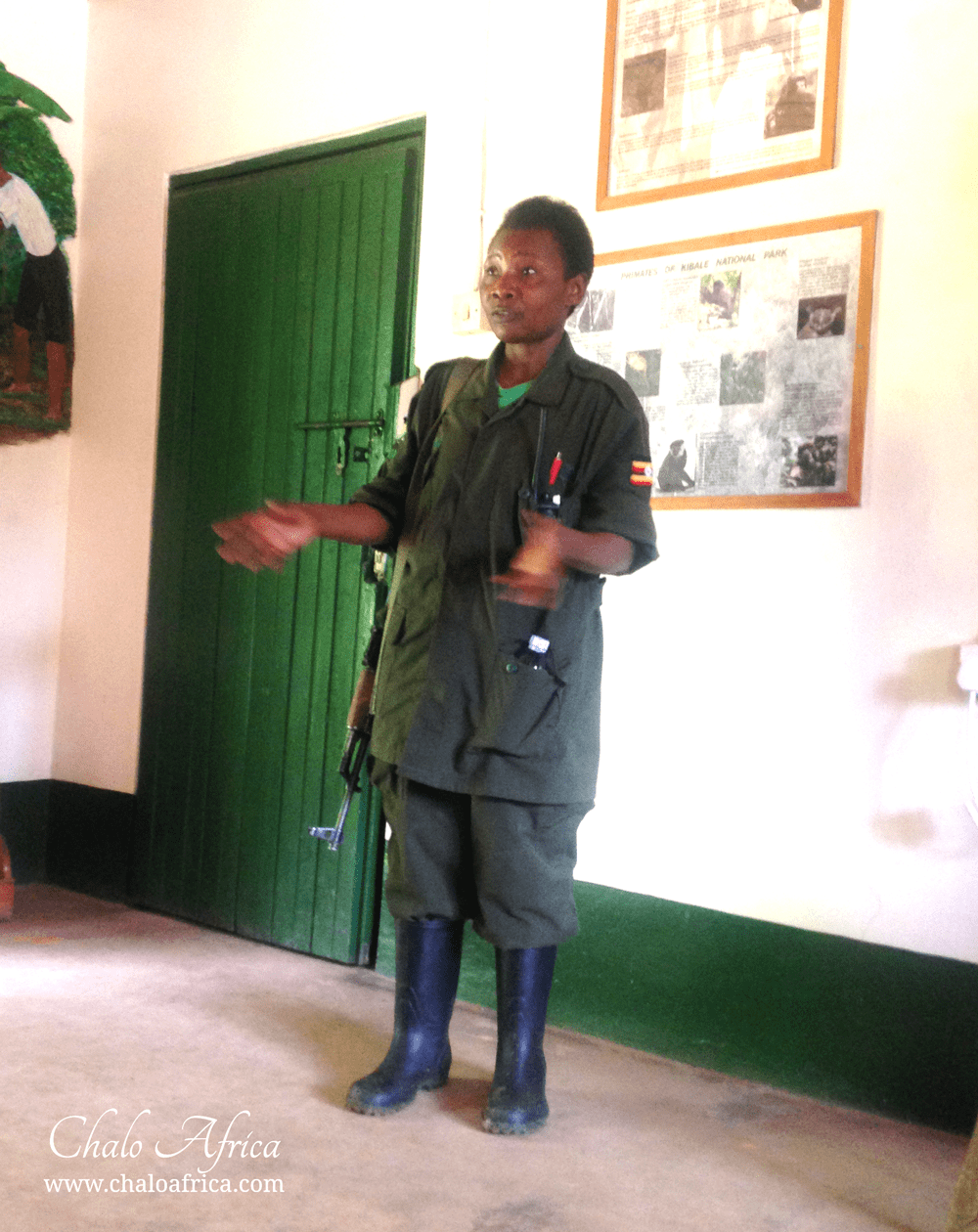
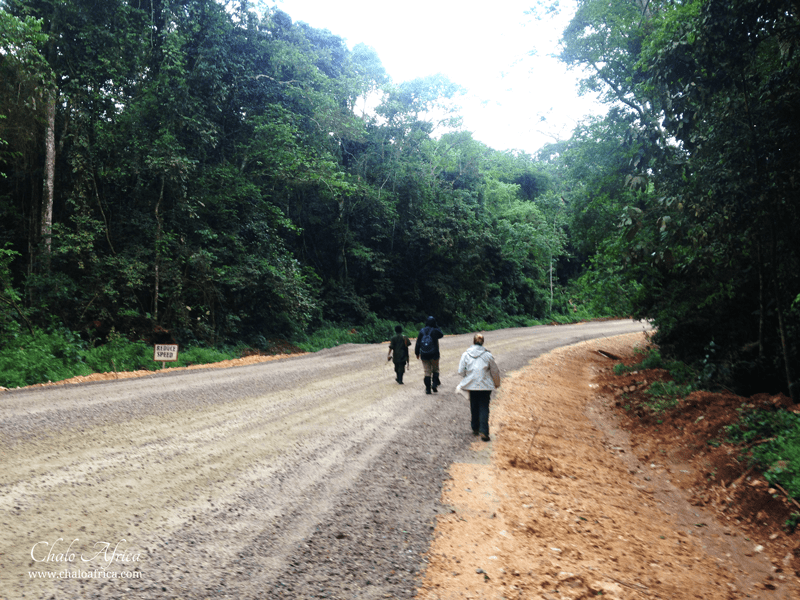
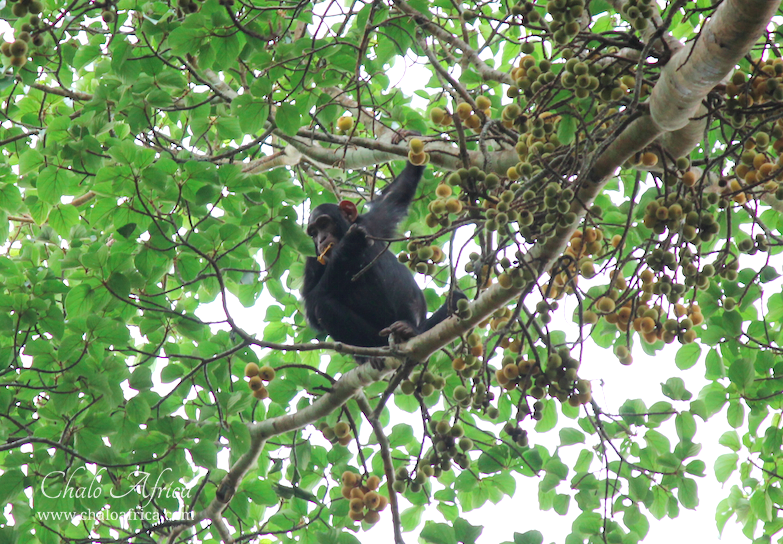
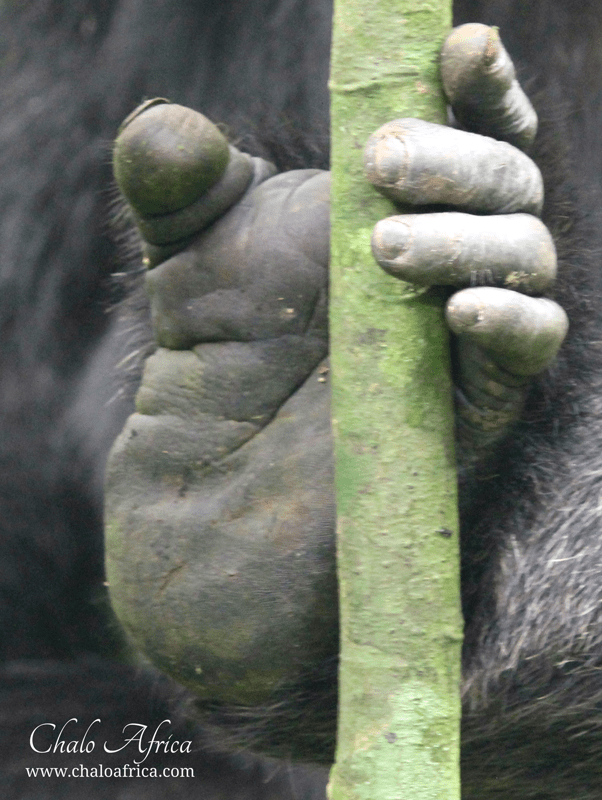
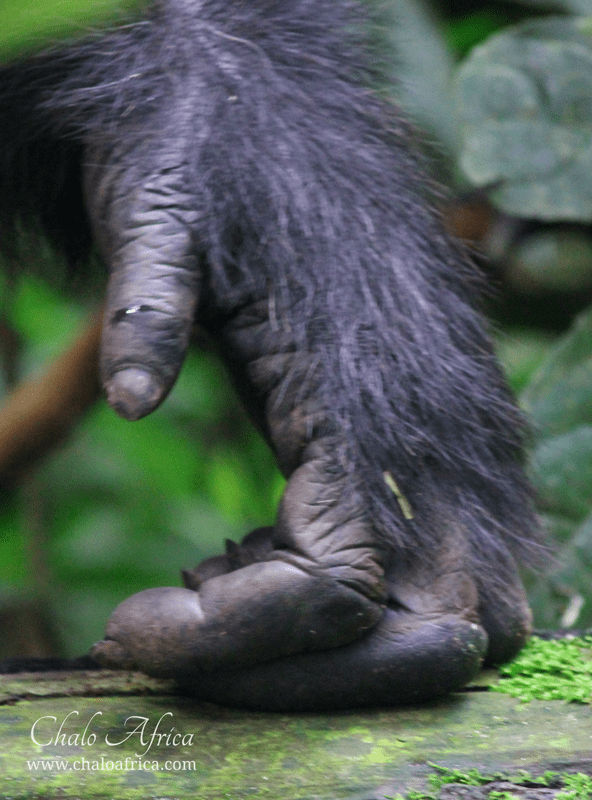
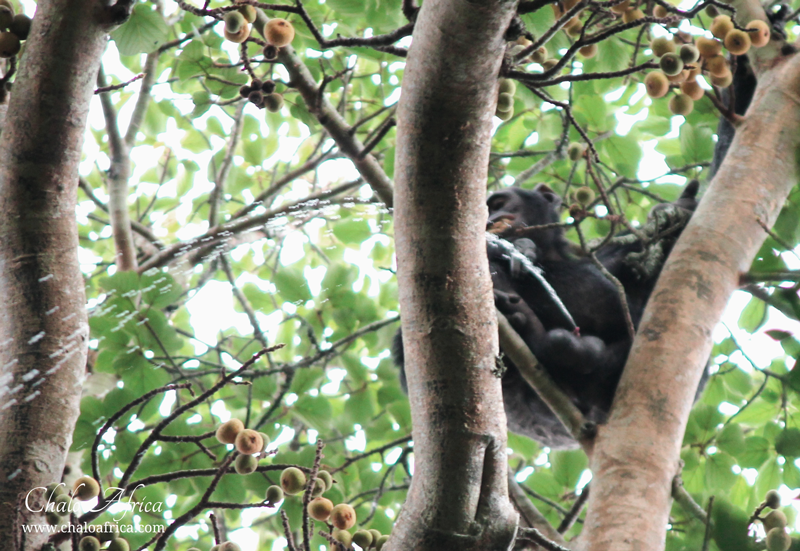
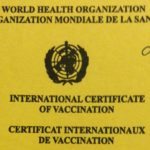
Leave a Reply